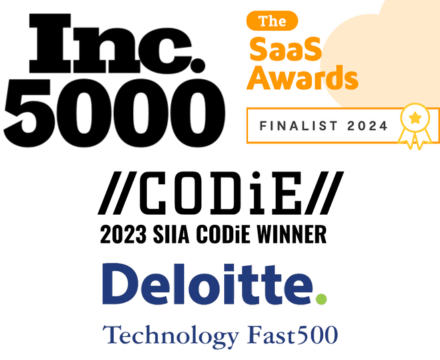Lease management tasks
Lease management, sometimes referred to as lease administration, is the day-to-day execution of tasks related to a company’s lease portfolio. Lease management involves a variety of routine tasks, ranging from basic administrative duties to more complex financial and strategic activities. The specific tasks can vary depending on the size and complexity of a company’s lease portfolio, as well as the industry. However, there are some common tasks in lease management. These tasks can be categorized into several areas: activities immediately following lease agreement, ongoing administration, and those relating to audits and reporting.
Data entry and maintenance
Typically, lease management consists of the activities that take place after a lease has been agreed upon. First, new lease agreements are entered into a central repository. This is typically on a server, intranet, or software.
Next is lease abstraction, which involves inputting key lease details such as dates, payment amounts, terms, and asset information into an easily readable format (a lease abstract). This abstract makes it quick and easy for stakeholders to retrieve information on asset details, e.g., serial number, address, contact information, financial details, and other data. Alongside the abstract, lease information must be inventoried for efficient reporting, often achieved through Excel spreadsheets or automated software.
Both lease entry and abstraction, while potentially time-consuming, are vital for accurate management, accounting, and reporting. Software with AI document abstraction can significantly reduce the time and errors associated with these phases.
Once data is entered it must be maintained. Ongoing data maintenance includes updating lease records to reflect amendments, renewals, terminations, and other contractual changes, as well as maintaining a comprehensive lease inventory of all active, expired, and terminated leases. Effective document management is also a core component, involving the systematic organization and storage of lease agreements and related documentation, such as amendments and insurance certificates.
Payment processing and tracking
Lease administration also includes tracking rent payments according to agreed-upon schedules and ensuring timely disbursement to lessors. Processing and paying invoices by their due dates is essential. Real estate leases frequently include common area maintenance (CAM), which is charged in addition to base rent. These charges, along with rent and taxes, should be regularly verified against the terms of the lease agreement to prevent overpayments, a surprisingly common occurrence. Lease audits can be conducted to verify the accuracy of charges, particularly CAM charges.
Lease accounting
Another financial aspect of lease management is lease accounting. This includes calculating lease liabilities and right-of-use (ROU) assets in accordance with relevant accounting standards (ASC 842, IFRS 16, FRS 102, and GASB 87), preparing journal entries to accurately record lease-related transactions in the general ledger, and generating amortization schedules that detail the allocation of lease payments or the recognition of lease expenses. In addition, the ongoing monitoring of lease classifications is necessary to ensure they are correctly categorized as operating or finance leases.
Lease administration
Key administrative activities include managing renewals and terminations by tracking options and deadlines and initiating necessary procedures. This also involves ensuring ongoing compliance with lease terms by diligently monitoring adherence to lease clauses concerning maintenance, insurance, and other contractual obligations. Communication with lessors is vital, requiring prompt responses to inquiries and efficient resolution of any disputes. Processing lease agreement changes and updating records accordingly is also a core responsibility.
Reporting and analysis
Effective lease management incorporates the generation of comprehensive reports, encompassing lease expenses, liabilities, and other key financial metrics. Data held in a lease management system can support finance, procurement, IT, real estate, and other departments in making business-critical decisions around leasing such as:
- Determining whether to buy or lease an asset
- Forecasting and budgeting for future periods
- Renewals, terminations, and/or renegotiations
Analyzing this lease data is crucial for identifying trends, optimizing lease terms for cost-effectiveness, and forecasting future lease-related expenditures. These activities ultimately support the preparation of accurate and compliant financial disclosures for financial statements.
Who’s responsible for lease management
Lease management duties can be aggregated across multiple departments, handled by administrative staff, or placed under the responsibility of a single person.
Businesses with a high volume of real estate leases, like retailers, typically have a real estate manager who oversees all of their leases. Companies with a large number of equipment leases – think healthcare and manufacturing – may have a dedicated equipment manager. And finally, some companies have a general lease manager to maintain all leases, regardless of type. The person charged with lease management responsibilities can sit under the accounting, operations, or legal departments.
Managing leases is highly collaborative work, especially in large organizations. Lease managers route information amongst teams who may never work closely together. Because they play a central role in collecting and managing information on leases, they need to be detail-oriented and strong communicators who can understand the nuances of each lease and communicate it to stakeholders in the back office and in the field.
Lease management tools
Effective lease management requires accuracy and adherence to evolving accounting standards. Lease management tools play a crucial role in achieving this. Typically the tools used are either Excel, or lease management software.
Excel
Excel is a common tool for lease management. It doesn’t come at any additional cost, most professionals know how to use it, and you can configure an Excel spreadsheet however you like. However, Excel has shortcomings that make lease management more time-consuming and error-prone.
Without automated alerts, rent abatements and concessions are missed, resulting in thousands of dollars in unnecessary costs. Plus, the time and effort it takes to build and maintain a spreadsheet takes away from other important tasks. Companies with more than 20 leases need a more sophisticated solution.
Lease management software
Lease management software addresses Excel’s shortcomings by providing a centralized database for all lease information and documents. This central repository streamlines data entry and lease abstraction, especially when equipped with AI capabilities, significantly reducing errors.
Software also facilitates communication and collaboration with features like integrated communication tools, automated alerts, and a comprehensive audit trail. This ensures that all relevant parties have access to necessary information and can track changes effectively.
Moreover, while Excel can be used for reporting, lease management software, like LeaseQuery, provides automation and better reporting capabilities, automating date tracking, calculations, and reporting. In addition, LeaseQuery automates accounting, creating amortization schedules, disclosure reports, and journal entries, saving time and ensuring compliance.
As lease obligations become larger and more complex, a sophisticated lease management system becomes increasingly necessary to maintain efficiency and accuracy.
What’s next for lease management
Technological advancements are driving the sophistication of lease management processes and tools, which are increasingly crucial for managing lease obligations. Simultaneously, the evolving regulatory landscape necessitates a strong focus on compliance. Centralized access to information via lease management tools ensures operational effectiveness and accuracy, especially with the rise of remote work.










